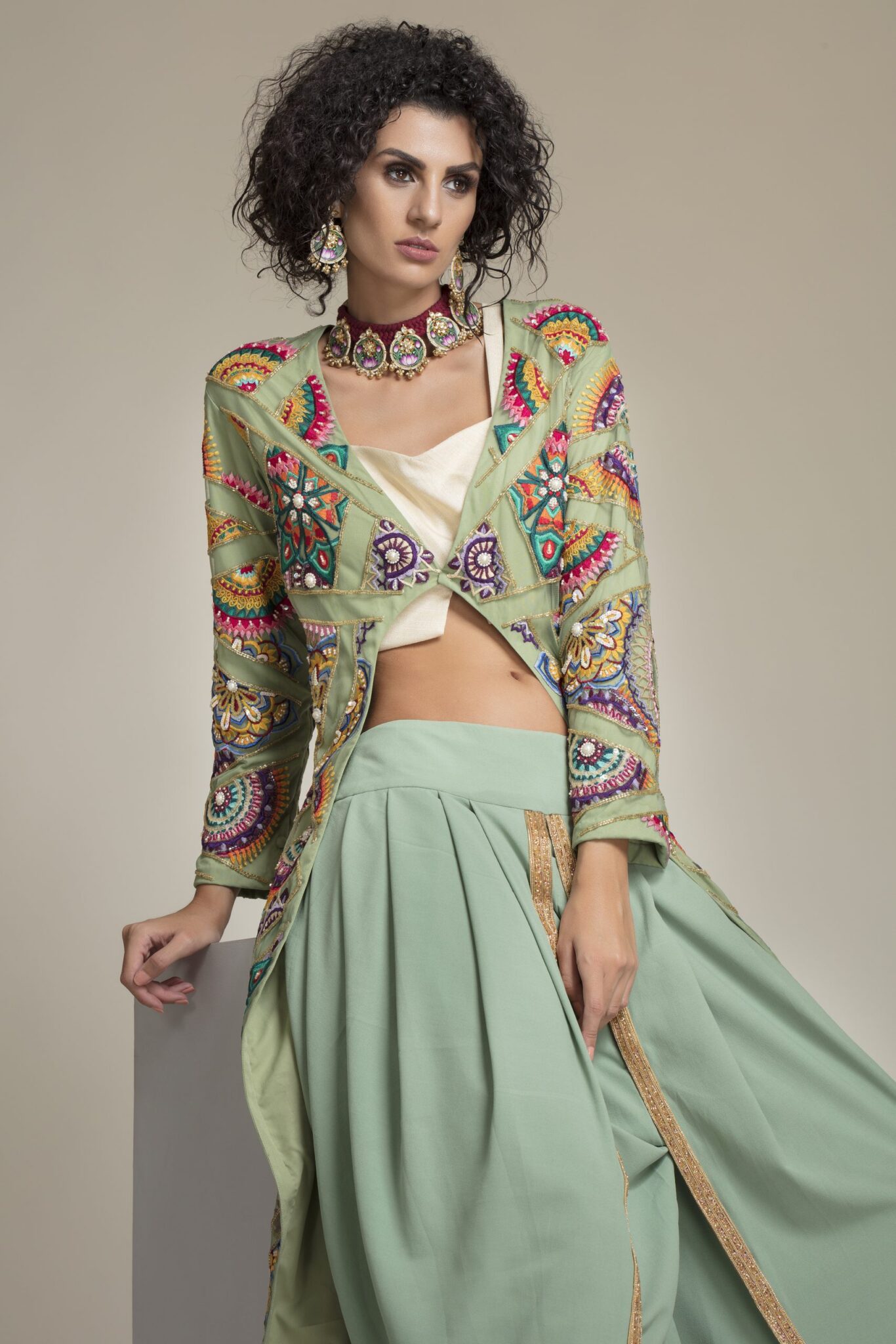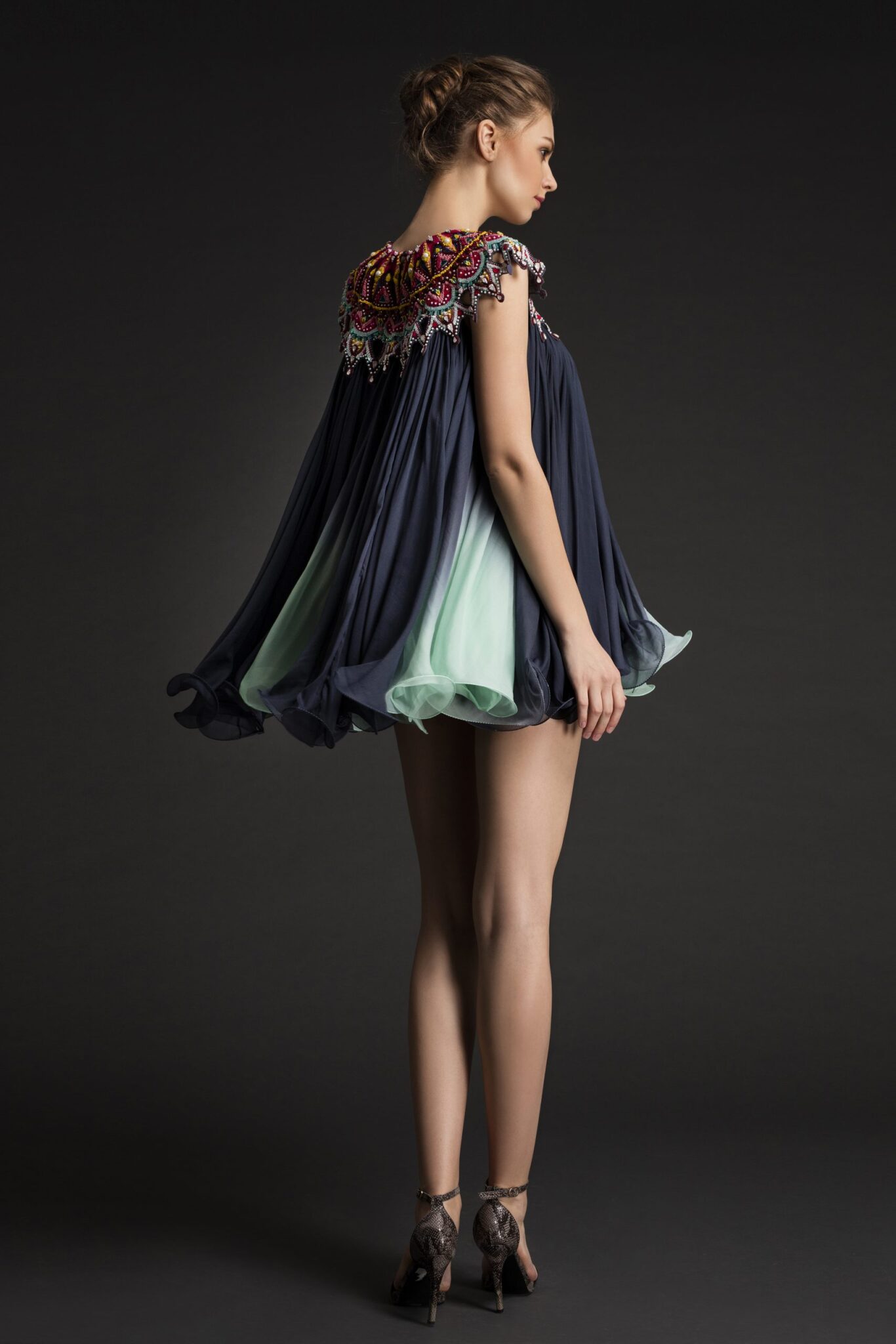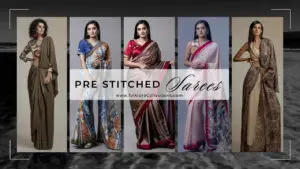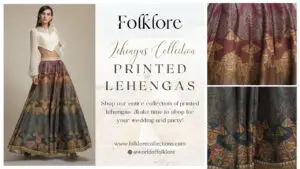Clothing has long been a form of self-expression, a canvas upon which individuals paint their personalities, beliefs, and cultural affiliations. In recent years, mandala and ombre dresses have gained popularity not just for their aesthetic appeal but also for their profound symbolism. In this comprehensive exploration, we delve into the rich world of mandala dress symbolism and the captivating allure of ombre dresses, uncovering the hidden language that our outfits speak.
Let’s understand about Mandala dresses
Mandala dresses are not just garments but intricate expressions of spirituality, cultural richness, and personal growth. Derived from the ancient Sanskrit term “circle,” mandalas represent the universe’s cosmic order and the interconnectedness of all things. When translated into fashion, the mandala dress becomes a wearable work of art, telling a story through geometric patterns, sacred symbols, and vibrant colours.
- Spiritual Connection: Many mandalas feature intricate details and sacred geometry, reflecting spiritual and cosmic elements. A mandala dress can symbolize a connection to spirituality, inner peace, and the pursuit of higher consciousness. It becomes a wearable form of meditation, grounding the wearer in tranquillity and balance.
- Colour Symbolism: The colours used in mandala dresses contribute significantly to their symbolism. Each colour holds unique meanings and energies. For example, blue may represent calm and serenity, while red symbolizes passion and energy. The choice of colours in a mandala dress allows the wearer to convey specific emotions or intentions.
- Circular Wholeness: The primary symbolism of mandala dresses lies in the circular form itself. The mandala represents unity, completeness, and the cyclical nature of life. When worn as a dress, it serves as a reminder of the interconnectedness of all things and the journey towards self-discovery and self-realization.
- Personal Transformation: Mandalas often incorporate patterns from a central point, signifying personal growth and transformation. A mandala dress can reflect one’s journey towards self-improvement and becoming the best version of oneself.
- Cultural Affiliation: Mandalas have roots in various cultures, including Hinduism and Buddhism. By wearing a mandala dress, individuals may express their connection to these spiritual traditions or convey a broader appreciation for diverse cultures and philosophies.
How have Ombre dresses come into the picture?
With their graceful transitions from one colour to another, Ombre dresses celebrate change, versatility, and the nuanced beauty of life’s continual evolution. The word “ombre” itself, meaning “shaded” in French, encapsulates the essence of these dresses as they seamlessly blend different hues, creating a mesmerizing and visually striking effect.
- Expressing Emotions: The colours in an ombre dress allow the wearer to convey specific emotions or moods. For example, a warm-toned ombre might evoke passion and vibrancy, while cooler tones can create a sense of calm and tranquillity. Ombre dresses become a personalized canvas for expressing one’s emotional state or desired atmosphere.
- Balance and Harmony: The harmonious blending of colours in ombre dresses symbolizes balance and unity. Each shade complements the others, creating a cohesive and aesthetically pleasing ensemble. This symbolism can extend beyond the outfit as a visual reminder to seek balance and harmony in various aspects of life.
- Transition and Change: The core symbolism of ombre dresses lies in the smooth transition from one colour to another. This gradual shift represents the inevitability of change and the beauty of transitions. Ombre dresses become a metaphor for life’s constant evolution and the acceptance of change as a natural part of existence.
- Nature-Inspired Aesthetics: Ombre dresses often draw inspiration from the natural world, mimicking the gradients found in sunsets, ocean waves, or blooming flowers. By wearing such dresses, individuals connect with the beauty of nature and carry a piece of its tranquil aesthetics into their daily lives.
- Versatility and Creativity: Ombre dresses offer a versatile canvas for designers to showcase their creativity. Blending colours allows for endless possibilities, from subtle and monochromatic transitions to bold and contrasting spectrums. This versatility appeals to individuals seeking unique and expressive fashion choices.
Mandala or Ombre dresses
While both mandala dresses and ombre dresses hold symbolic significance, they differ in their visual language and the messages they convey
- Symbolic Depth: Mandala dresses carry profound spiritual and cultural symbolism, often representing cosmic order, unity, and personal growth. The symbolism of mandala dresses is deeply rooted in ancient traditions and philosophical concepts. On the other hand, ombre dresses primarily symbolize transitions, change, and emotional expression, focusing on aesthetic appeal.
- Personal Expression: Ombre dresses are highly versatile and offer a broader range of self-expression through colour choices. Wearers can select ombre dresses based on emotions, preferences, or the atmosphere they wish to create. Mandala dresses, while allowing for personal expression, often carry a more predefined set of symbolic meanings.
- Visual Complexity: Mandala dresses are known for their intricate geometric patterns and detailed designs. The complexity of mandalas adds depth to their symbolism, reflecting the multifaceted nature of life. In contrast, ombre dresses rely on the interplay of colours, creating a visually striking yet more straightforward aesthetic.
- Occasions and Settings: Mandala dresses, with their spiritual and intricate designs, may be chosen for specific occasions or settings where a deeper symbolic connection is desired. Ombre dresses, emphasizing transitions and aesthetics, are versatile and can be worn in various settings, from casual outings to formal events.
- Cultural Connection: Mandala dresses often evoke a sense of cultural connection, especially when they incorporate designs inspired by Hindu or Buddhist mandalas. The symbolism is intertwined with these cultures’ rich history and spiritual traditions. In contrast, ombre dresses may not carry cultural symbolism to the same extent, focusing more on personal expression and aesthetics.

Final Thought
In the language of fashion, mandala dresses and ombre dresses serve as powerful mediums of self-expression, each with its unique symbolism and aesthetic appeal. Mandala dresses, rooted in ancient traditions, carry a profound spiritual significance, symbolizing unity, personal growth, and cultural connection. On the other hand, ombre dresses, with their gradient symphony of colours, represent transitions, change, and emotional expression, offering wearers a canvas for creativity and versatility.
Whether adorned in the intricate patterns of a mandala dress or the flowing hues of an ombre dress, individuals engage in a silent dialogue with the world, expressing their inner selves and embracing the symbolic depth woven into their chosen attire. Fashion becomes not just a means of covering the body but a form of art that communicates personal narratives, emotions, and perspectives. So, the next time you choose a mandala dress or an ombre dress, remember that your outfit is not just a garment; it’s a statement, a symbol, and a reflection of the intricate tapestry of your own story.










